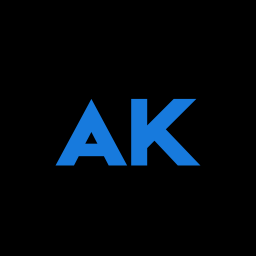Scaling SQLs on LinkedIn with Limited Budget: How I Cut Cost from $400 to $90
Objective:
Build a profitable LinkedIn Ads engine to drive consistent, qualified sales leads (SQLs) for Pavago—without the luxury of a large budget. Every click needed to count. Every asset needed to perform.
The Challenge
Pavago is a lean team.
I didn’t have $50K/month to test and iterate endlessly.
The mission was simple:
Prove that LinkedIn Ads could reliably generate SQLs at scale within strict budget constraints—and do it fast enough to justify continued investment.
Foundations First — Building for Accuracy, Quality, and Speed
Before launching anything at scale, I focused on setting up a system that was tight, trackable, and conversion-ready:
1) ICP Research
- Deep profiling of our target buyer: role, seniority, company size, team structure, and tools
- Identified high-signal LinkedIn Groups for added audience filtering
- Used insights to build targeting that was narrow but high intent
2) Form Design: Low Friction, More Quality
- Required company emails only to preserve lead quality (something i implemented after our twitter ads test)
- Structured the form for speed, not data collection: Step 1: Email → Step 2: Select Date & Time
- Removed phone field entirely to reduce drop-off
- Instead, used Clay automation to enrich submitted leads with verified phone numbers
- Data was piped directly into HubSpot CRM
- Ensured sales team had complete lead profiles without adding friction to the form
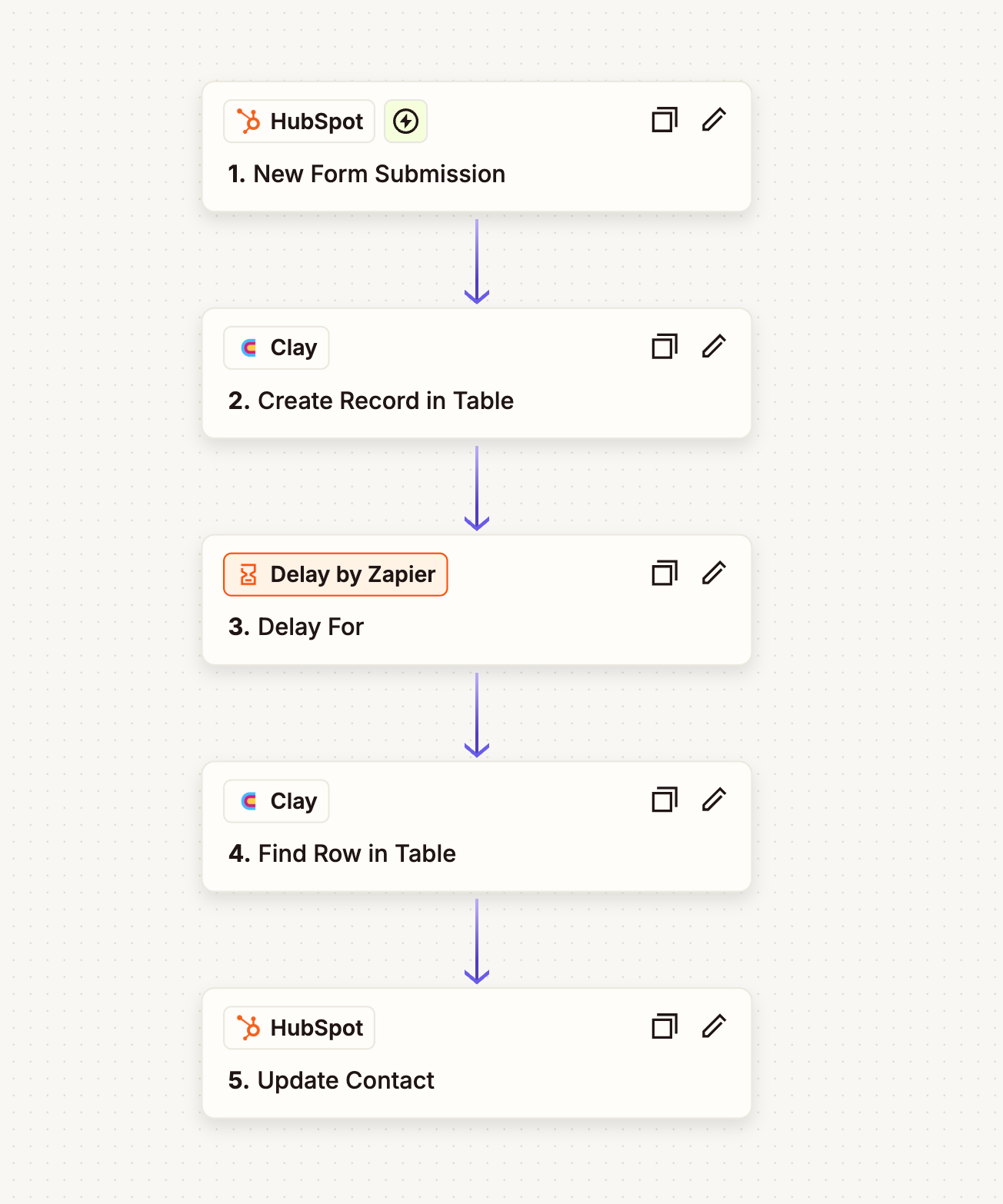
3) Tracking Infrastructure
- Established full UTM framework to tag every campaign, creative, and audience
- All data flowed cleanly into HubSpot, enabling visibility across every step of the funnel
- This allowed us to segment and optimize in real time, without attribution gaps
Phase 1 — The Starting Point
I launched with a focused, role-specific strategy targeting sales leaders at SMBs (1–50 employees). The offer was direct:
"Hire a 'good' SDR for $1000/mo"
Creative was clean and minimal. One test video
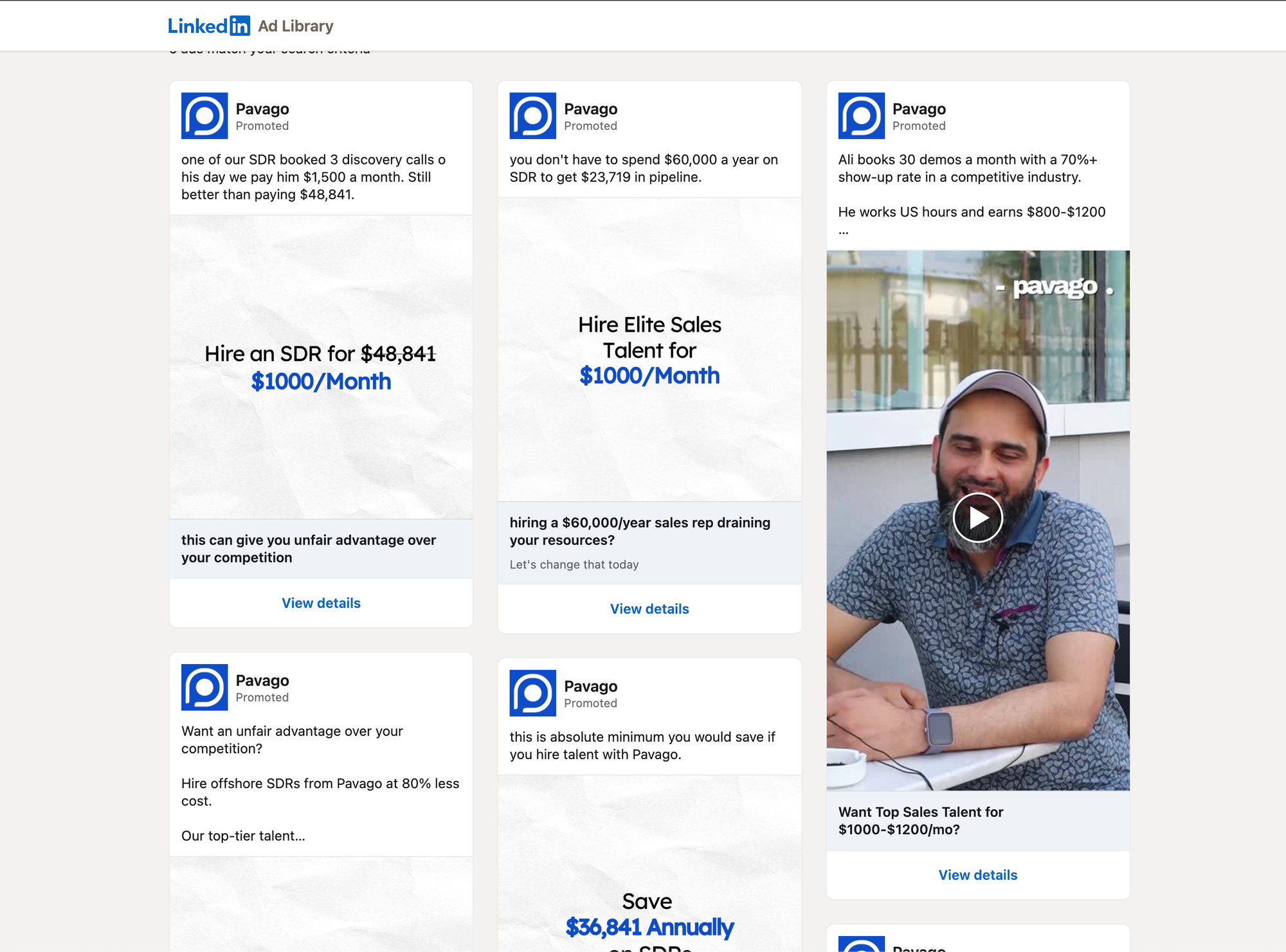
The landing page was bold, differentiated, and clearly positioned Pavago as the affordable alternative to expensive U.S. hiring.
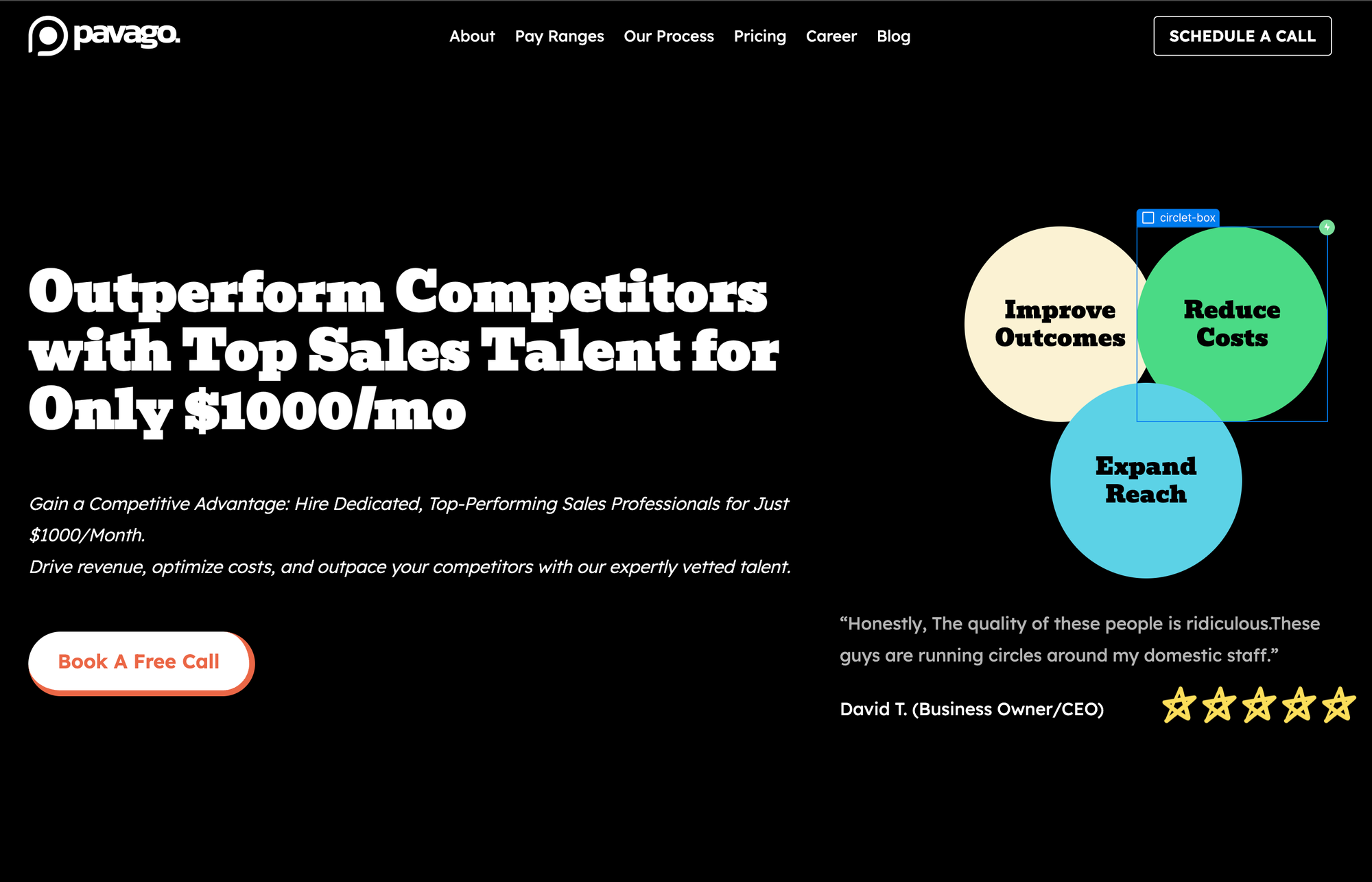
It worked—kind of.
- Landing Page Conversion Rate: 4%
- Cost per SQL: ~$400
It was a solid start. But at that price point, we weren’t where we needed to be. There was no room to scale unless we found real efficiency.
Phase 2 — The Strategic Shift
I didn’t touch the media buying strategy.
Same audience. Same campaign structure. Same targeting.
What changed?
Everything else.
I reframed the copy entirely.
From the previous ads, I saw that the expensive resource, no results narrative was strong
So instead of leading with “outperform competitors,” I led with the pain point:
“You Don't Need To spend $60/yr just to get 20k in the bank"
No mention of competition up front.
Just a hitting a clear pain point grounded in what the market actually cares about—great people, at a price that makes sense.
Once they clicked, the landing page clarified the how:
- You don’t need to pay $60K for a qualified SDR.
- Pavago connects you with global talent that performs just as well.
- Fully managed, fully vetted, fully supported.
This repositioning changed everything.
Execution — From Good to Great
🔁 Copy:
Shifted from explaining “why offshore” to selling the result of offshore—elite performance at a disruptive price.
🎯 Landing Page:
- Rebuilt with a simplified, familiar layout
- Clear hierarchy, benefit-led copy
- Focused on buyer outcomes, not company features
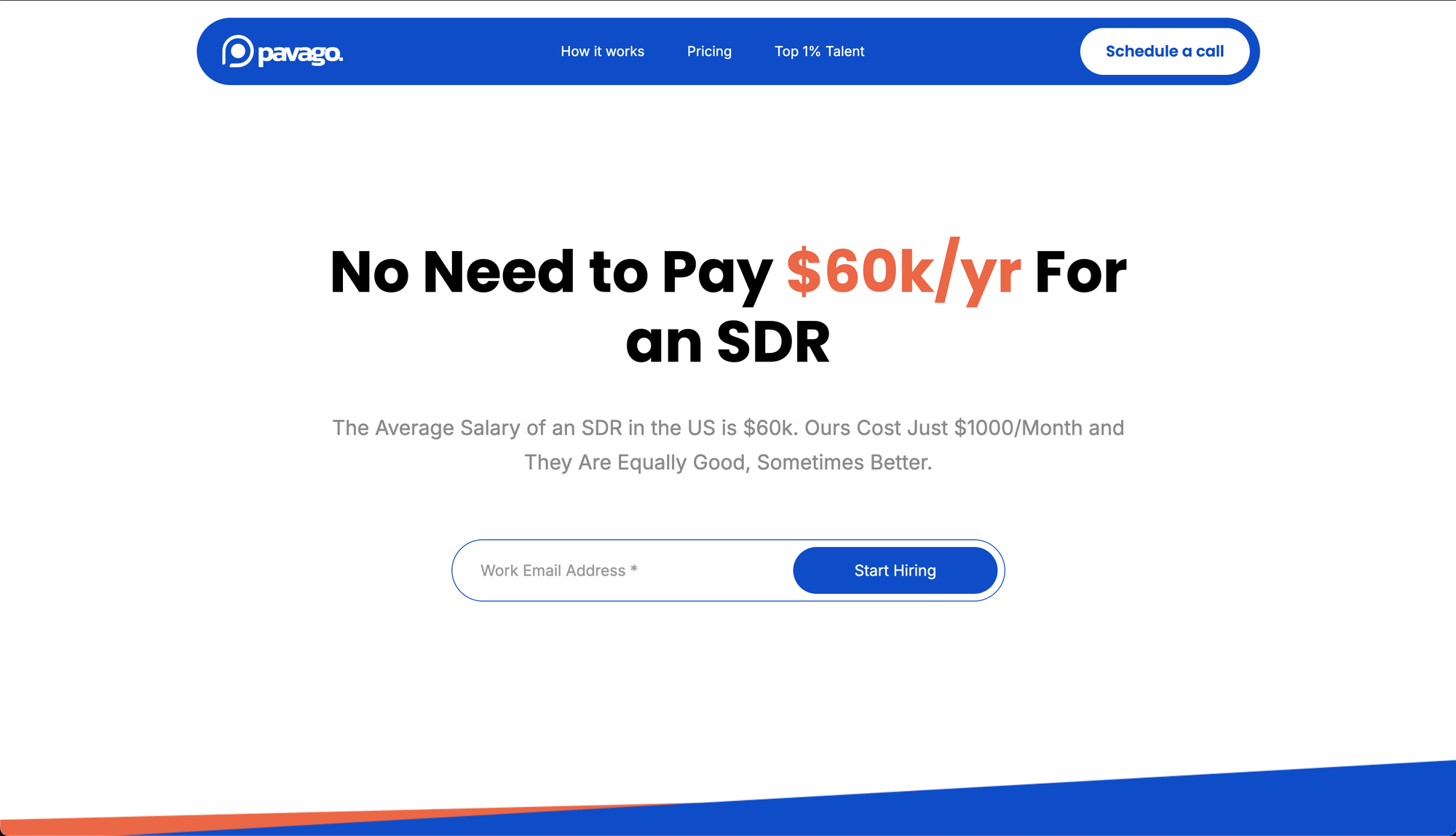
🎨 Creative:
- Bright, scroll-stopping visuals (yellow backgrounds)
- Short-form headlines with strong contrast
- Introduced video content from clients and team members
- Built trust and demonstrated talent—without “selling” it
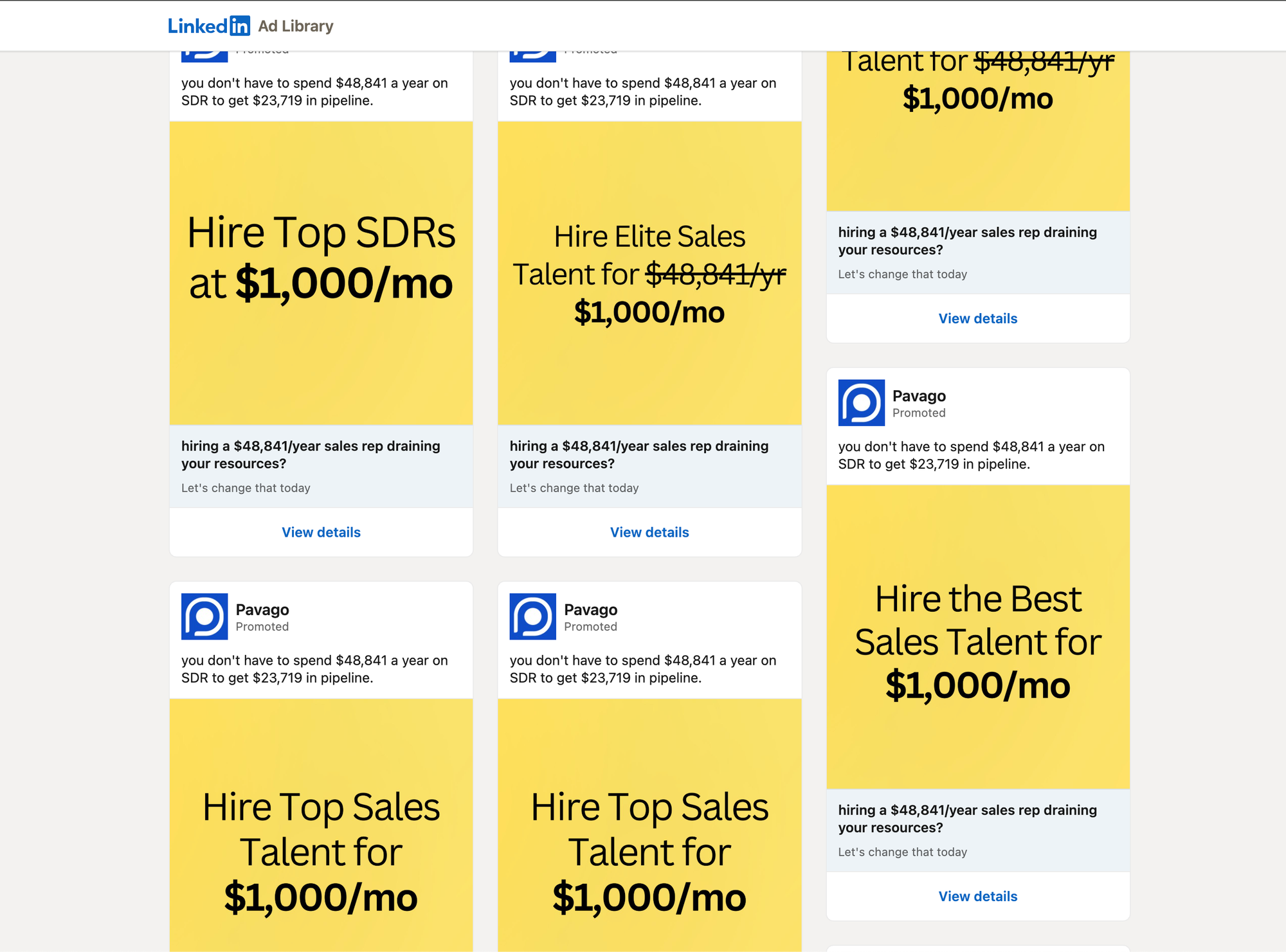
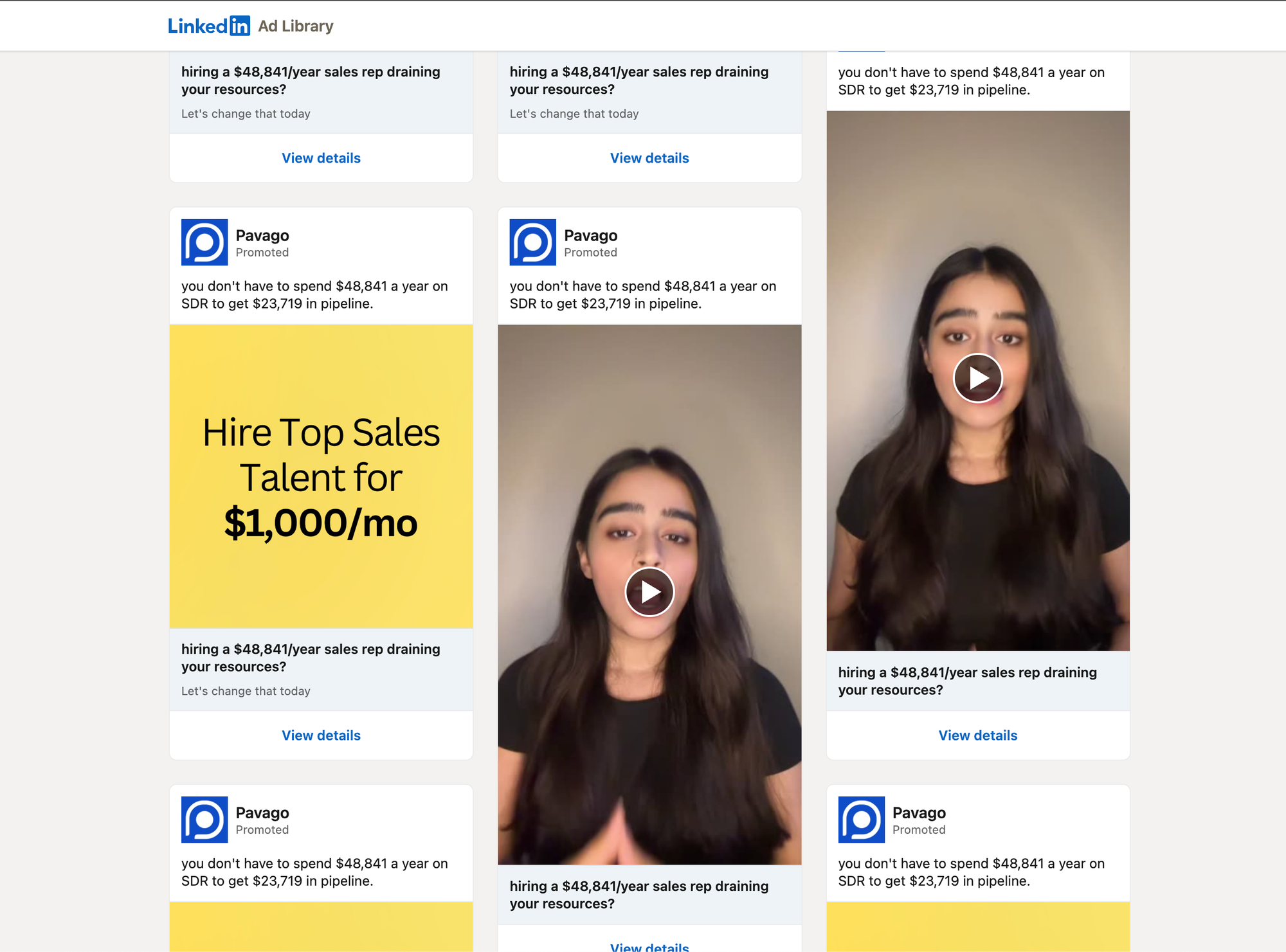
📈 Media Buying (Stayed the Same):
- Website conversion campaigns
- 60K–400K audience size
- SMBs (1–50 employees)
- Targeted by seniority, job title, and interest-based LinkedIn groups
The Results
- Landing Page Conversion Rate: 4% → 12%
- Cost per SQL: ~$400 → ~$90
- Lead quality remained high
- No increase in ad spend
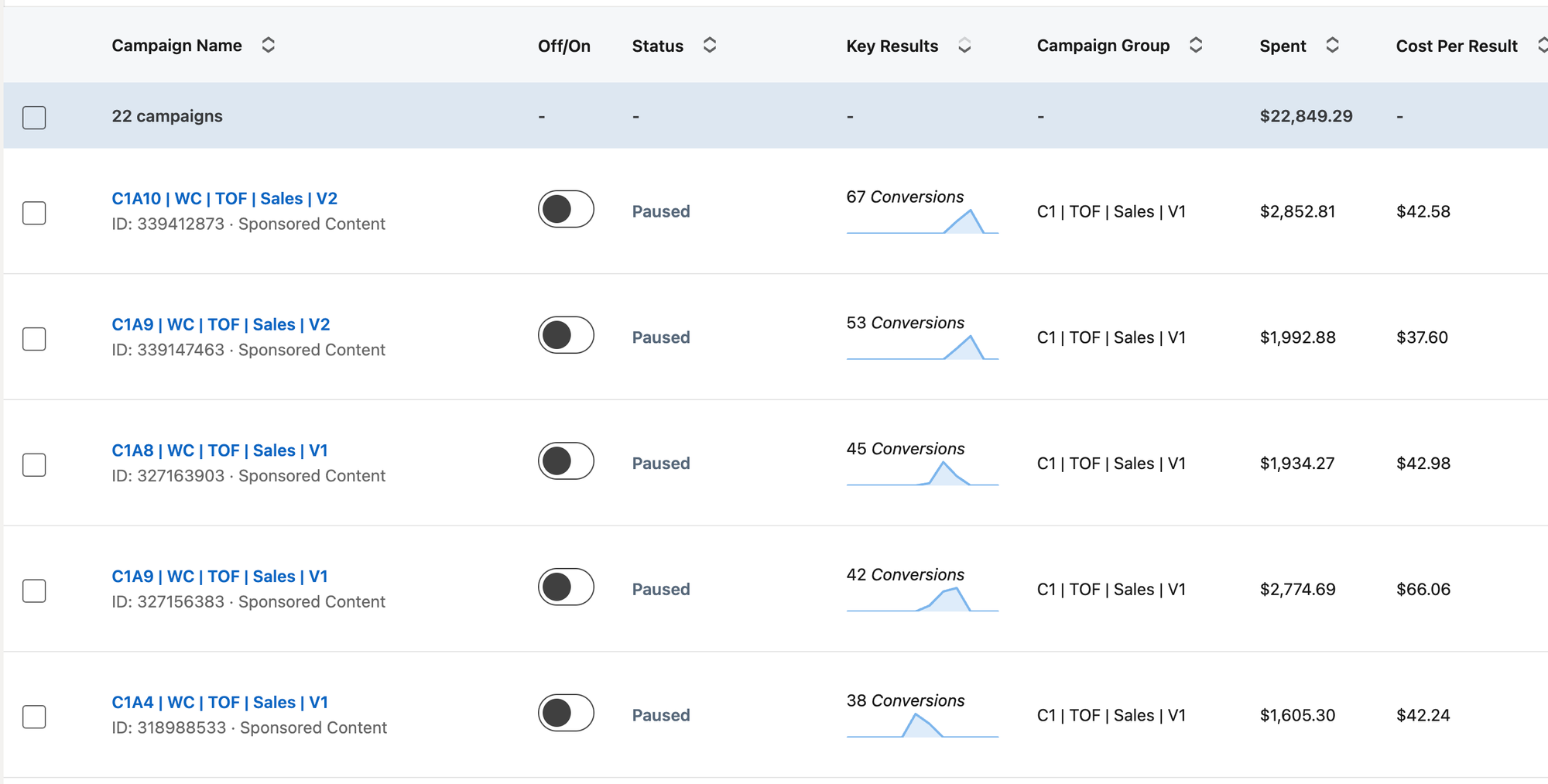

What Worked
- Outcome-first positioning outperformed model-first messaging
- Landing page clarity had a bigger impact than visual polish
- Creative didn’t need to be complex—just bold enough to stop the scroll
- With limited budget, strategy and messaging became the true levers for growth
Final Thoughts
With limited budget, the path to growth wasn’t more traffic—it was tighter messaging, better UX, and smarter structure.
I didn’t just run ads.
I built a performance engine that delivered SQLs predictably—at less than half the original cost.
